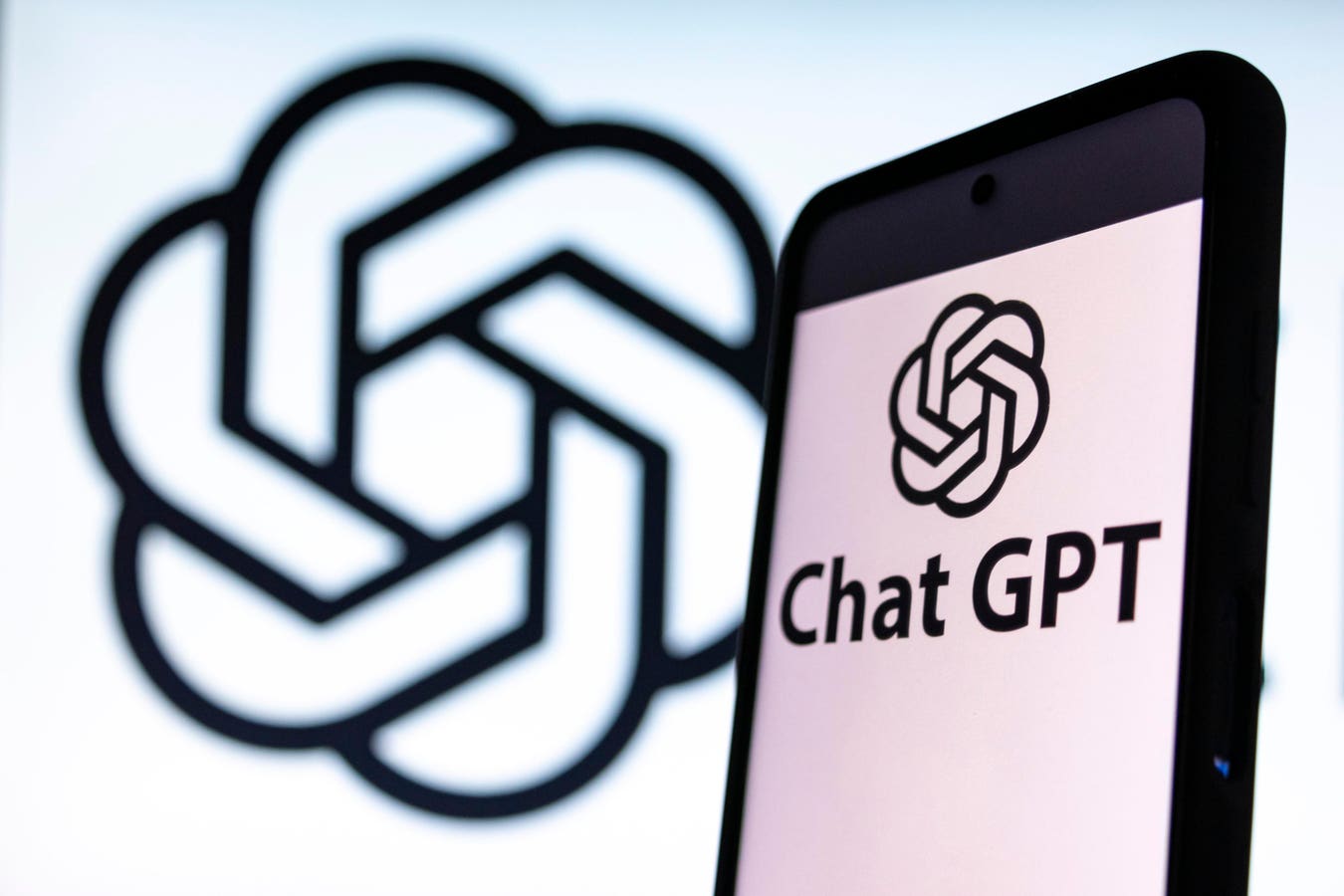ChatGPT Values At $86 Billion On Birthday; Google Rides On

Photo by Nicolas Economou
NurPhoto via Getty Images
Happy Birthday, ChatGPT!
It’s been quite a year since the clever chatbot went viral, stealing hearts on South Park and setting off an investment boom not seen since the birth of the iPhone.
Now enabled with voice, users can talk with it and even ask it to create customized GPTs that can be sold on the GPT store, which was expected to launch this month.
That is, until OpenAI’s nonprofit board shockingly fired its chief executive officer Sam Altman the weekend before Thanksgiving, then blew through two interim CEOs, including chief technology officer Mira Mulati and Twitch cofounder Emmett Shear, before more than 700 of its 770 employees threatened to quit and join Microsoft with Altman. Former Salesforce co-CEO Bret Taylor and former US Treasury Secretary Larry Summers swept in to replace the women on the board and reinstate Altman. Microsoft then rejoined the board as observer, filling the gap Reid Hoffman left when he departed in March, and now Thrive Capital’s $86 billion tender offer for employee shares appears to be back on.
Despite the Succession-level drama which had Silicon Valley glued to X for days, ChatGPT remains at the forefront of the AI craze with 100 million weekly users and two million developers using its tools, including 92% of the Fortune 500, according to company stats provided during its recent developer day. It also has a robust partner program that includes integrations with brands like Snapchat and Expedia.
As it stands, the main players in the chat space garnering much of the hype today include:
Additionally, Elon Musk has released Grok, a snarky chatbot trained on X/Twitter data, available for verified X subscribers at grok.x.ai, and Amazon has Q, an enterprise chatbot available for $20 a month at aws.amazon.com/q. Meta is beta-testing its generative AI tools in the US across Facebook, Instagram and Whatsapp.
For image generation, OpenAI’s DALL-E and Midjourney are no longer free, but Runway has a free trial at runwayml.com/ai-magic-tools/text-to-image and is powering Canva’s video generation tools.
The Road Ahead
Waymo Ride
Martine Paris
As exciting a year as its been for generative AI, autonomous vehicles nearly came to a screeching halt when Cruise lost its license to operate its adorably-named robotaxis like “Popsicle” and “Goldie” in San Francisco, amid several headline-grabbing mishaps.
The same weekend that OpenAI descended into chaos, Cruise’s visionary founders and Y Combinator alums, Kyle Vogt and Dan Kan, stepped down, handing over the reins of their high-flying startup to parent company General Motors, after the entire fleet was put under review, including the Phoenix, Austin, Dallas, Houston and Miami markets. A devastating blow, considering Vogt’s grand ambitions for the company shared at the Dreamforce and Disrupt conferences in San Francisco just weeks prior.
But fortunately, Vogt and Kan’s dream of autonomous driving remains alive and well with Google’s Waymo which is still operating in San Francisco and Phoenix, and coming soon to Los Angeles and Austin. And the experience of riding in one is so compelling that even Uber has a partnership with Waymo to test rides and deliveries on its platform in Phoenix.
I rode in my first Waymo this week in San Francisco and was impressed by the smooth ride of its all-electric Jaguar I-PACE car.
Although the app didn’t offer door-to-door service for my route, it seemed to provide safer boarding options, at the curb and away from traffic, which the app guided me to. In the dark, I could see its light-projected “Waymo” welcome mat, and as I opened the door, the car greeted me by name and I instantly felt at home. While it waited for me to buckle up, it gave a quick orientation. I then pushed “start ride” and it was on its way, carefully maneuvering through traffic.
I rode in silence for awhile filming it, amazed at how diligently it was driving. Then I found a great mix on the rear display and kicked back to enjoy the ride, appreciating how safe it felt not having to deal with a human driver. The whole experience cost about $20, comparable with the cost of an Uber, before tip.
I started to think of all of the incredible applications of such a technology — like ordering a Waymo to charge an electric car or provide backup power for a house during an outage. It certainly feels like we’re at the start of something big.
Along with flying taxis like Joby and Volocopter taking off, it’s been a very good year for AI and I’m looking forward to seeing all the other advances at CES 2024.



